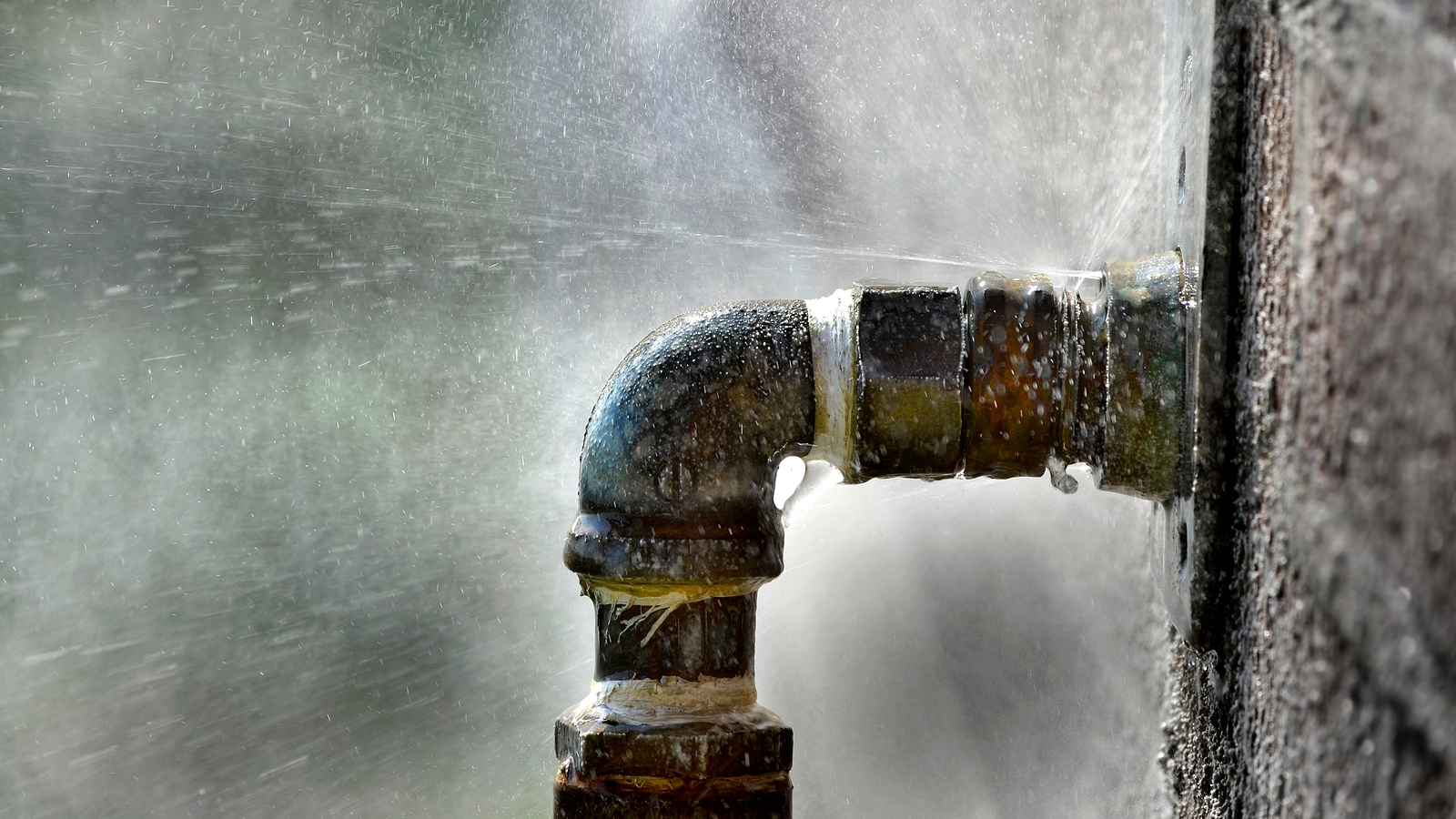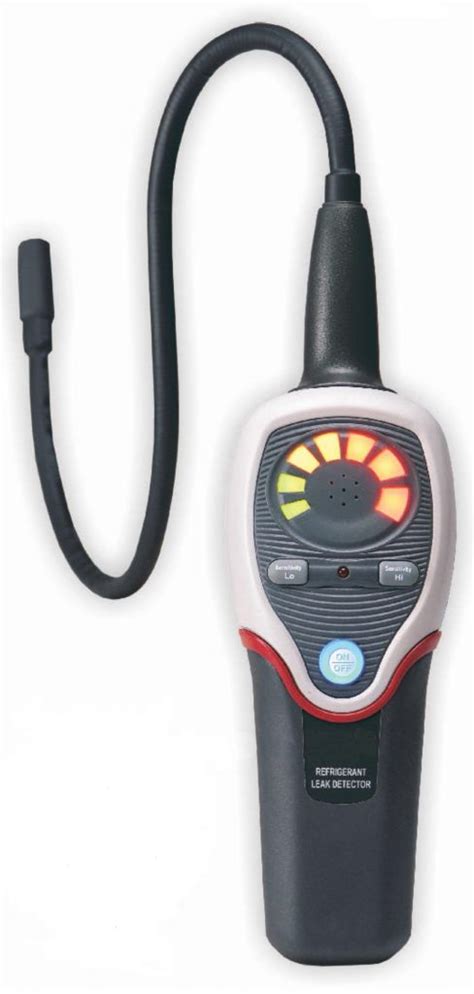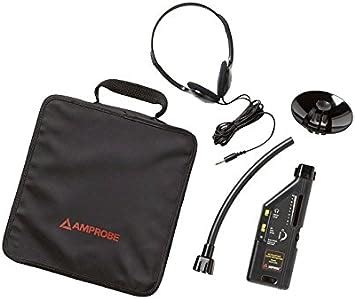Leak Detector

Detecting and addressing leaks is a crucial aspect of maintaining the integrity and efficiency of various systems, from industrial processes to everyday household appliances. This article delves into the world of leak detection, exploring the technology, methods, and applications that make it an indispensable tool across industries.
The Science Behind Leak Detection

Leak detection is an intricate process that employs a combination of cutting-edge technology and scientific principles to identify and locate breaches in a system. The primary objective is to ensure the integrity of the system, whether it be a pipeline, a hydraulic system, or even a domestic water supply.
The technology behind leak detection has evolved significantly over the years. Initially, leak detection relied on manual inspections and simple tools like pressure gauges and ultrasonic detectors. While these methods are still effective for certain applications, modern leak detection systems now leverage advanced technologies such as acoustic emission, infrared thermography, and even satellite imaging for larger-scale operations.
Acoustic emission, for instance, utilizes specialized sensors to detect the high-frequency sounds emitted by a leak. These sounds are often inaudible to the human ear, but with the right equipment, they can be captured, amplified, and analyzed to pinpoint the location of the leak. Infrared thermography, on the other hand, measures temperature differences in a system, as leaks can cause localized temperature changes that are visible through infrared imaging.
Real-World Applications
Leak detection finds its applications across a diverse range of industries and systems. In the oil and gas sector, for example, leak detection is critical for environmental protection and operational safety. Leaks in pipelines or storage tanks can have devastating environmental consequences, leading to soil and water contamination. By employing advanced leak detection systems, these industries can quickly identify and address such issues, minimizing their environmental impact.
Similarly, in the water treatment and distribution industry, leak detection is vital for maintaining the efficiency of water supply systems. Leaks in pipes can lead to significant water loss, not only wasting a precious resource but also increasing operational costs. Advanced leak detection technologies help water utilities pinpoint leaks, enabling them to repair or replace faulty pipes promptly and reduce water wastage.
The importance of leak detection extends beyond industrial applications. In the residential sector, leaks can lead to water damage, mold growth, and increased utility bills. Homeowners can now utilize smart leak detection devices that integrate with their home automation systems. These devices can detect leaks in real-time and notify homeowners via their smartphones, allowing for swift action to prevent further damage.
| Industry | Leak Detection Technology |
|---|---|
| Oil & Gas | Infrared Thermography, Satellite Imaging |
| Water Treatment | Acoustic Emission, Pressure Sensors |
| Residential | Smart Sensors, IoT Devices |

The Future of Leak Detection

As technology continues to advance, the future of leak detection looks promising. Researchers and engineers are constantly developing new methods and technologies to improve the accuracy and efficiency of leak detection systems.
One of the emerging trends in leak detection is the use of artificial intelligence (AI) and machine learning algorithms. These technologies can analyze vast amounts of data from sensors, historical records, and environmental conditions to predict potential leak locations and even identify the root causes of leaks. By combining AI with advanced sensing technologies, leak detection systems can become even more proactive, identifying issues before they escalate into full-blown leaks.
Furthermore, the development of nanotechnology is expected to bring about a new generation of leak detection sensors. These nanosensors could be embedded directly into pipelines or other critical infrastructure, providing real-time monitoring and immediate alerts in the event of a leak. The miniaturization of sensors also opens up possibilities for leak detection in previously inaccessible areas, enhancing the overall efficiency of leak management.
Environmental Impact
The environmental benefits of advanced leak detection systems cannot be overstated. In industries like oil and gas, where leaks can have catastrophic environmental consequences, the ability to detect and address leaks quickly can significantly reduce the environmental footprint. By minimizing leaks, these industries can not only protect the environment but also improve their sustainability credentials, fostering a more responsible and eco-friendly approach to operations.
In conclusion, leak detection is a vital component of modern infrastructure management, playing a critical role in industries ranging from oil and gas to residential plumbing. With continuous technological advancements, leak detection systems are becoming more accurate, efficient, and environmentally friendly. As we move forward, the integration of AI, machine learning, and nanotechnology will further enhance our ability to detect and address leaks, ensuring the integrity and sustainability of our systems.
How often should leak detection inspections be conducted in industrial settings?
+The frequency of leak detection inspections can vary depending on the industry and the specific system being monitored. However, as a general guideline, quarterly inspections are recommended for critical systems to ensure early leak detection and prevent potential disasters. Regular inspections can help identify small leaks before they become major issues, allowing for timely repairs and maintenance.
Can leak detection be used to identify leaks in underground pipelines?
+Absolutely! Advanced leak detection technologies, such as ground penetrating radar and acoustic sensors, are specifically designed for underground leak detection. These technologies can detect changes in the ground’s composition and identify anomalies that indicate a potential leak. This is particularly useful for pipelines and other underground infrastructure, where visual inspections are not feasible.
What are the common signs of a leak in a residential setting?
+In a residential setting, common signs of a leak include sudden increases in water bills, the sound of running water when all taps are turned off, visible water stains on walls or ceilings, and the presence of mold or mildew. If you suspect a leak, it’s important to act promptly and contact a professional for an inspection. Early detection can prevent significant damage and costly repairs.



